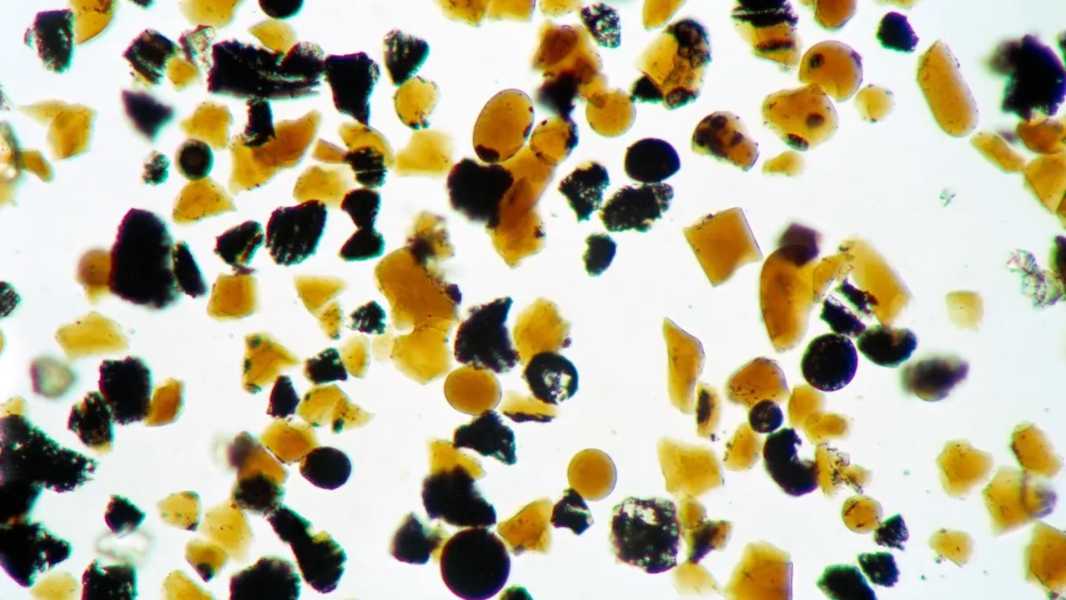
Microscopic images of lunar volcanic glass. (Photo courtesy of NASA)
When the Apollo astronauts first set foot on the moon, they expected to see gray rocks and dust. But they were amazed when they stumbled upon something that looked almost magical: tiny, glittering orange glass beads scattered across the lunar landscape like microscopic jewels. The beads, each smaller than a grain of sand, are actually ancient time capsules from the moon’s volcanic activity billions of years ago. The beads were formed approximately 3.3 to 3.6 billion years ago by volcanic eruptions on the surface of the then-young moon.
The story of these glass beads begins with a powerful volcanic activity that would be incredibly interesting to observe. The beads were created when lunar volcanoes ejected materials from the depths to the surface, and each drop of lava instantly hardened in the cold vacuum surrounding the Moon. Imagine volcanic eruptions similar to the famous lava fountains of Hawaii, but taking place in the airless environment of space.
With no atmosphere to slow them down or weather to destroy them, these tiny glass spheres have remained untouched for more than three billion years. For fifty years, these specimens have sat in labs, waiting for technology to catch up with scientific curiosity.
You may like
- Our Moon May Have Once Been as Hellish as Jupiter's Supervolcanic Moon Io
- Scientists have found evidence of a 'supernova graveyard' on the seabed and possibly on the surface of the moon.
- Researchers claim that a whole 'population' of mini-moons may be hiding near Earth
“These are some of the most amazing extraterrestrial samples we have. These beads are tiny, pristine capsules of the lunar interior.”
Ryan Oglior, associate professor of physics at Washington University in St. Louis.
Now, researchers have finally been able to peer inside the beads using modern microscopic techniques that didn’t exist during the Apollo era. The team used several cutting-edge tools, including high-energy ion beams and electron microscopy, to analyze the beads without damaging them. They had to be extremely careful to protect the samples from Earth’s atmosphere, which can alter the ancient minerals on their surface.
What makes these beads scientifically valuable is their variety of colors and compositions, which tell different chapters of the Moon's volcanic history. Some beads are sparkling orange, others glossy black, and each variety provides information about different types of eruptions that have occurred over millions of years.
Sourse: www.livescience.com





